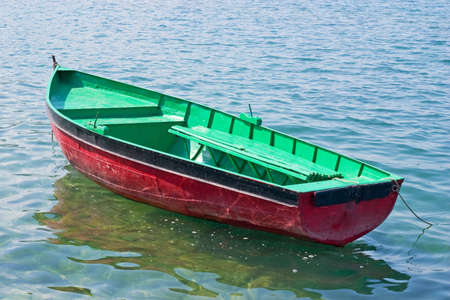Essential Fishing Tools for Survival
When it comes to survival fishing, having the right gear in your tackle box can make all the difference between a successful outing and a tough day on the water. Whether you’re caught off-guard by sudden weather changes or you lose a key piece of equipment, being prepared ensures you stay safe and well-fed. Every angler should have a set of essential tools designed for both everyday fishing and unexpected emergencies. These tools are not only handy for catching fish but also help you adapt quickly to unpredictable situations. In this section, we’ll provide an overview of the must-have survival fishing tools that keep you ready for anything Mother Nature throws your way.
2. Compact Multi-Tools and Knives
When it comes to survival fishing, having compact multi-tools and reliable knives in your tackle box is non-negotiable. These versatile gadgets are essential for handling a range of tasks that can arise on the water. From quickly cutting tangled fishing line to scaling and filleting your catch, multi-tools and knives provide the functionality needed to adapt to unexpected situations. Many American anglers swear by these tools because they combine several functions into one space-saving device, making them perfect for both planned trips and emergency scenarios.
Why Every Angler Needs Multi-Tools and Knives
Multi-tools aren’t just about convenience—they’re about preparedness. Whether you need pliers to remove a stubborn hook or a screwdriver for quick gear repairs, a quality multi-tool ensures you won’t be caught off guard. Knives, on the other hand, are indispensable for bait preparation, cleaning fish, or even opening canned goods when you’re far from civilization. Packing both means you can tackle almost any problem without carrying extra weight.
Key Features to Look For
| Tool Type | Essential Features |
|---|---|
| Multi-Tool | Pliers, wire cutters, screwdrivers (flathead & Phillips), scissors, bottle opener, mini saw |
| Fishing Knife | Stainless steel blade, non-slip handle, sheath for safe storage, easy to sharpen |
Packing Tips for Your Tackle Box
- Choose lightweight and corrosion-resistant materials—especially important for saltwater fishing environments common in the U.S.
- Select folding designs to maximize space efficiency and safety.
- Keep your tools sharp and clean; dull blades are dangerous and ineffective.
Ultimately, including compact multi-tools and knives in your tackle box is not just a matter of convenience—it’s about being ready for anything the wild throws your way. In American fishing culture, preparedness is part of the adventure. Equip yourself properly, and you’ll be able to handle emergencies with confidence while making your time on the water safer and more enjoyable.
![]()
3. Emergency Fishing Line and Hooks
When it comes to survival fishing, having spare fishing line and a variety of hooks in your tackle box is non-negotiable. The unpredictability of the outdoors means you never know when your main line might snap on a snag or when a particular hook size just isn’t cutting it. That’s why seasoned American anglers always carry extra spools of line—both monofilament and braided—ranging from light to heavy test strengths. This flexibility lets you quickly adapt to everything from small panfish in a creek to larger bass or catfish in deeper waters.
Carrying an assortment of hooks is equally important. Fish species differ not only by region but also by their feeding habits and mouth size. Keeping a selection of hook sizes, shapes, and gauges ensures you’re ready for bluegill biting gently or a surprise encounter with a trophy-sized carp. Circle hooks, J-hooks, and treble hooks all serve specific purposes; having them handy means you can adjust your rig instantly to improve your chances of landing whatever’s biting.
In emergency situations, these backup supplies can make the difference between going hungry and catching dinner. Spare line lets you re-rig after break-offs, tie improvised snares, or even repair gear on the fly. Extra hooks can be used not just for fishing, but also for other survival tasks like improvising tools or traps. For American anglers who love venturing into remote lakes or rivers, being prepared with emergency lines and hooks isn’t just smart—it’s essential for safe and successful outings.
4. Portable Water Filtration and Storage
Staying hydrated is crucial for any angler, especially when fishing in remote areas where clean water isn’t always available. Carrying the right portable water filtration gear ensures you can safely drink from natural sources and keep your energy up throughout your adventure. Here’s a look at essential hydration tools every survival-minded fisherman should pack:
Why Water Filtration Matters
Natural water sources can be contaminated with bacteria, protozoa, and other pathogens that can cause serious illness. Bringing a portable water filter or purifier helps you avoid these risks while reducing the need to carry heavy water bottles. This keeps your tackle box lighter and your trip safer.
Types of Portable Water Filters
| Filter Type | How It Works | Best For |
|---|---|---|
| Squeeze Filters | Water is squeezed through a filter into a clean container | Lightweight, solo anglers |
| Pump Filters | Pumping mechanism pulls water through filter media | Larger groups, faster filtration needs |
| Sip/Straw Filters | Suck water directly through a filter straw | On-the-go drinking, minimal gear setups |
Water Storage Solutions
Once you have safe drinking water, you’ll need reliable storage options. Collapsible bottles and hydration bladders are compact and easy to refill on the go. Look for BPA-free materials and leak-proof designs to avoid spills in your tackle box.
Recommended Features for Anglers
- Lightweight and compact design for easy packing
- Durable construction to withstand outdoor use
- Easy to clean between trips
Pro Tip:
If youre heading out for more than a day or fishing in an area with limited access to fresh water, consider bringing both a primary filter and backup purification tablets. Being prepared means you stay hydrated no matter what challenges arise during your fishing adventure.
5. Fire-Starting Kits and Signal Devices
When it comes to survival fishing, having fire-starting kits and emergency signaling devices in your tackle box is just as crucial as your rod and reel. Fire-starters—whether waterproof matches, ferro rods, or compact lighters—serve multiple life-saving purposes. If you find yourself stranded or lost, the ability to make a fire provides essential warmth during cold nights, helps you cook your catch safely, and even purifies water for drinking. Additionally, smoke from a fire can serve as a visual signal for rescuers searching for you in remote areas.
Signal devices such as whistles, signal mirrors, and compact emergency strobes are also vital pieces of gear every angler should pack. A loud whistle can be heard much farther than a shout, making it easier to attract attention if youre injured or need help. Signal mirrors use sunlight to send bright flashes over long distances—an old-school but highly effective method for alerting search parties or nearby boaters. Modern electronic strobes are lightweight and designed to run for hours, offering a reliable way to be seen at night or in low-visibility conditions.
Incorporating both fire-starting tools and signaling gear into your tackle box means you’re not just prepared for a great day on the water—you’re ready for unexpected emergencies too. Remember: in the wild, being able to stay warm and get noticed by rescuers can make all the difference. Don’t overlook these small but powerful tools when assembling your survival fishing kit.
6. First Aid Essentials for Anglers
No matter how prepared you are with your fishing gear, accidents can happen anytime you’re out on the water or along the shoreline. From fish hooks in fingers to unexpected slips and sunburns, it’s crucial to have a well-stocked first aid kit in your tackle box to handle minor injuries or even medical emergencies.
Why Every Angler Needs a First Aid Kit
Fishing often takes us far from immediate help, so being ready for cuts, scrapes, insect bites, or allergic reactions is part of responsible angling. A compact first aid kit gives you peace of mind and can make all the difference if things go sideways.
Key Items to Include
- Adhesive bandages: For small cuts, blisters, or abrasions—these are must-haves for protecting wounds from dirt and infection.
- Antiseptic wipes or ointment: Clean wounds quickly before bandaging to prevent infection, especially important when handling fish and bait.
- Tweezers: Essential for removing hooks, splinters, or stingers safely and efficiently.
- Medical tape and gauze pads: For larger wounds that need extra coverage and support.
- Pain relievers: Over-the-counter meds like ibuprofen can help manage pain from injuries or headaches while outdoors.
- Allergy medication: Antihistamines or an epinephrine auto-injector (if prescribed) are vital if you’re prone to allergic reactions from bites or stings.
Additional Safety Tips
Don’t forget items like sunscreen and bug spray to prevent burns and bites before they become a problem. Make sure everyone in your group knows where the first aid kit is stored and how to use its contents. Periodically check your supplies for expiration dates and restock as needed so you’re always ready for whatever comes your way on your fishing adventures.


